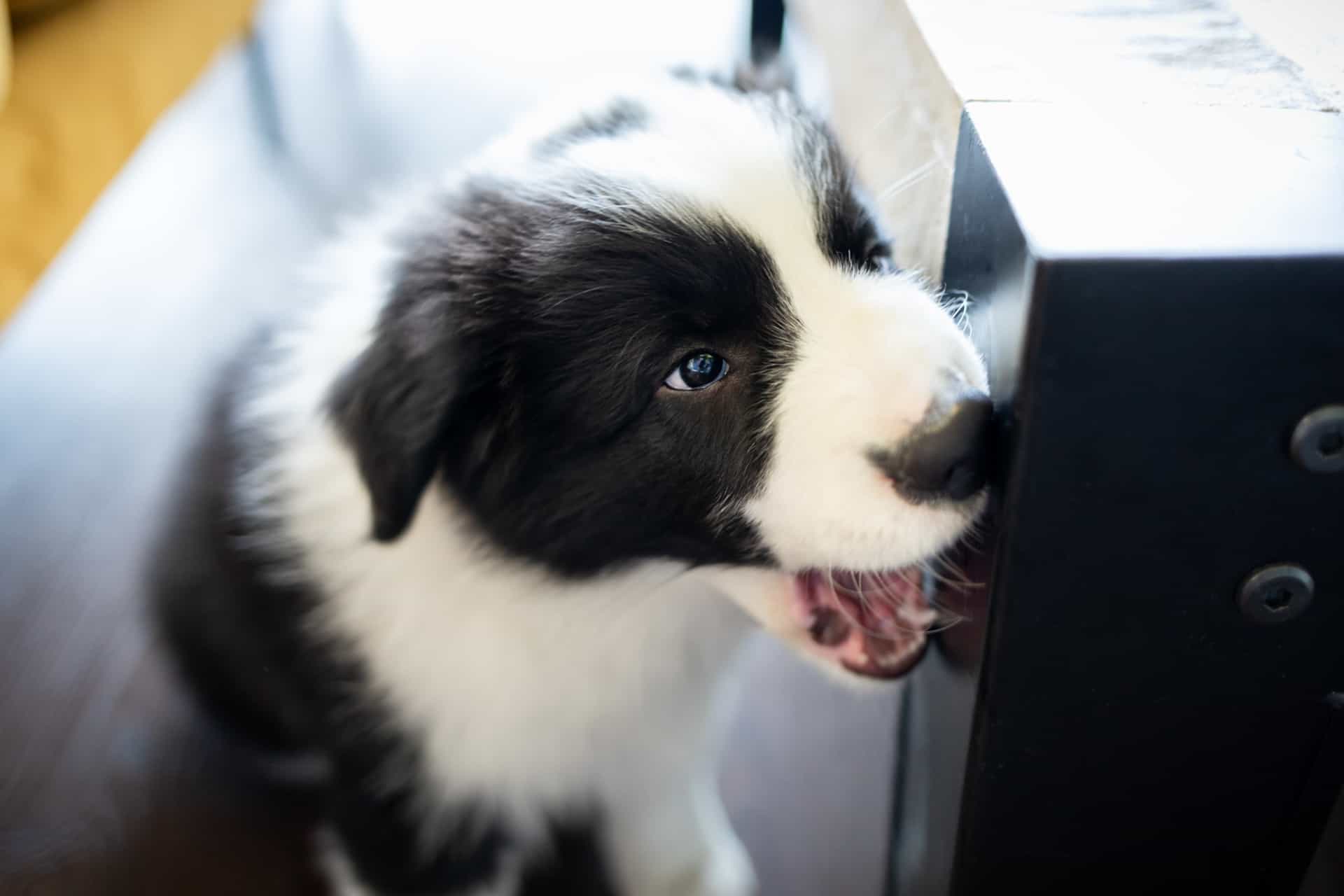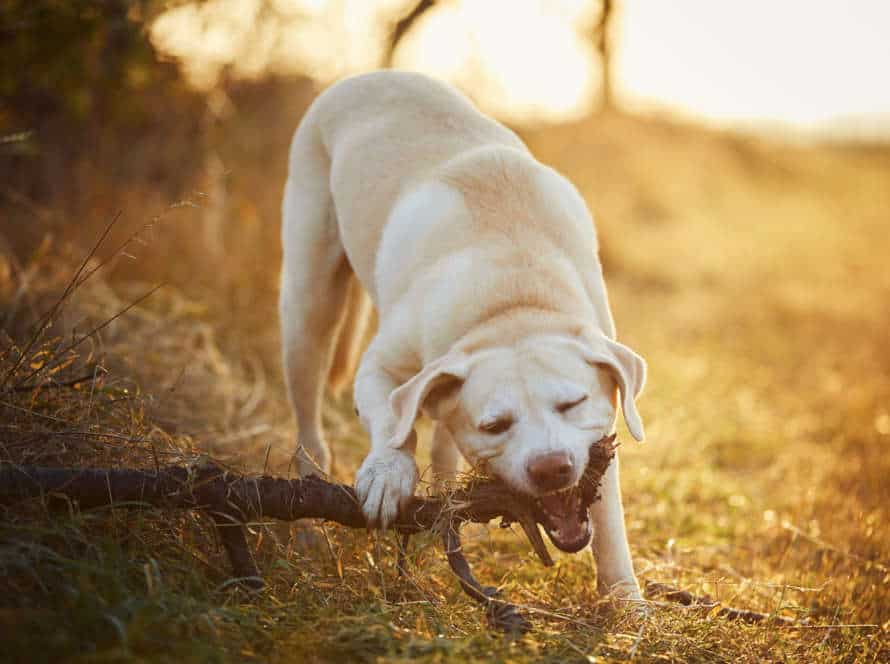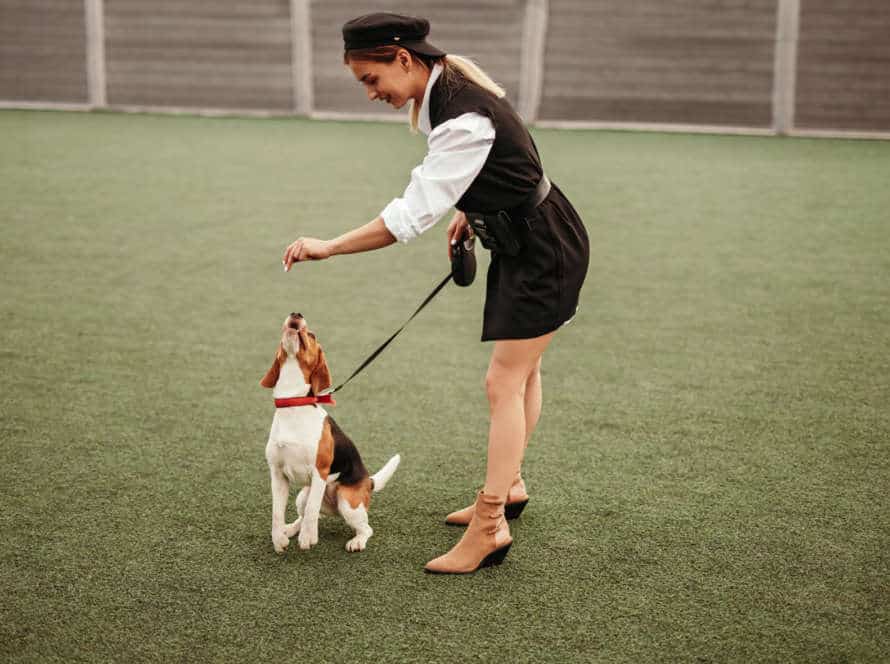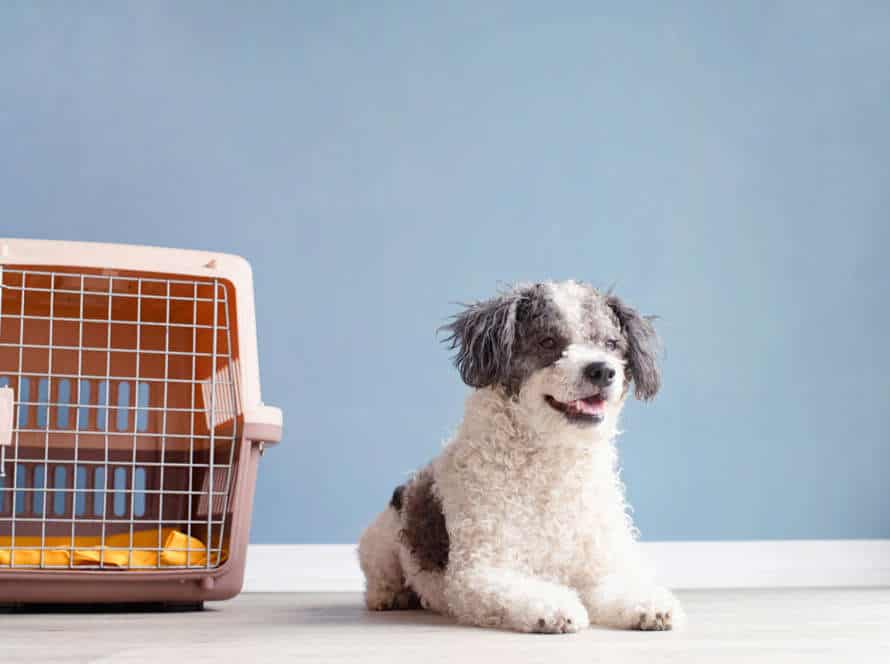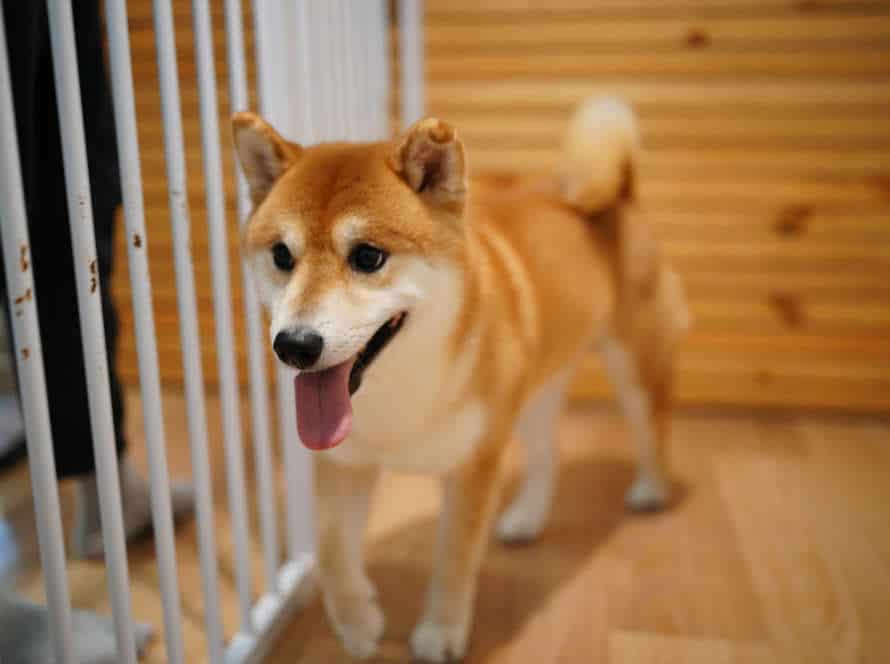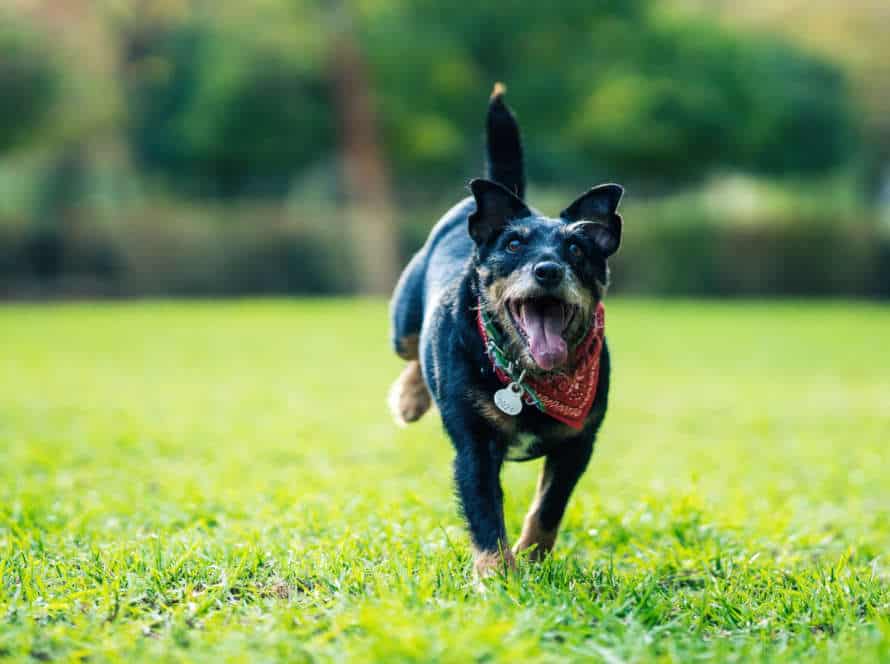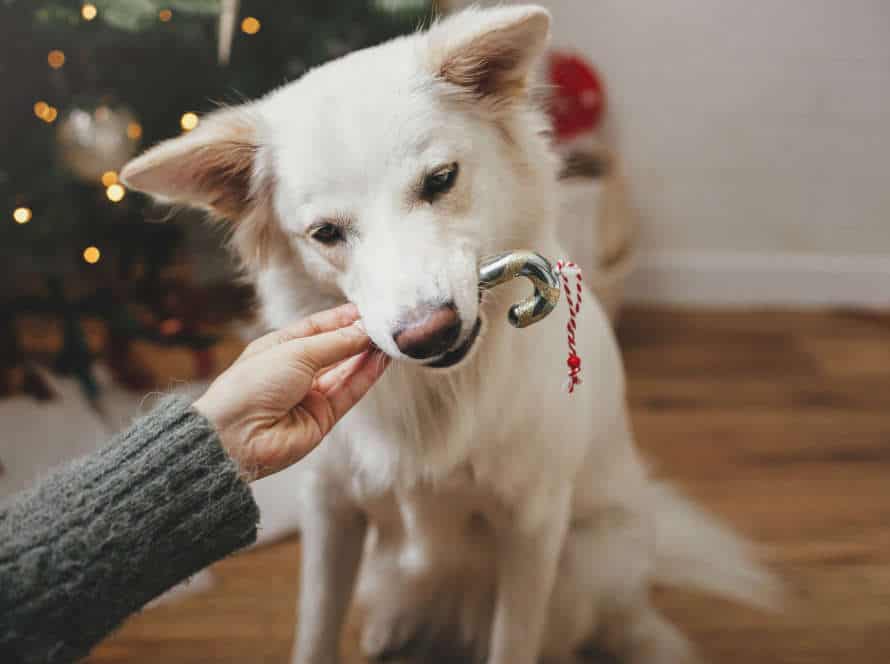How to Teach Your Puppy Bite Inhibition: A Step-by-Step Guide
Teaching your pup bite inhibition is essential. It’ll help them understand the right amount of mouthing when playing. It can also stop aggressive behavior in the future.
Here’s a step-by-step guide:
- When your pup bites you too hard during play, let out a yelp to surprise them.
- Stop paying attention for a few seconds. This will help your pup understand that biting leads to the end of playtime.
- After a few seconds, start playing again. Reward your pup if they play without biting hard.
- Do these steps again and again. Increase the yelp volume if your pup keeps biting too hard.
- Over time, your pup should learn to reduce their biting, to avoid ending playtime or getting a yelp.
With patience and practice, this technique will help teach your pup healthy biting habits and stop future behavioral issues.
Understanding Bite Inhibition
Bite inhibition is essential for your pup’s social growth. It teaches them how to be a good dog and interact with people and other animals without fear or aggression. So, what is it? Why is it important? And how do you teach it? Let’s find out!
It’s an important part of teaching your puppy the right way to behave. Understanding bite inhibition and how to teach it safely is a must.
Why Bite Inhibition is essential for puppies
Bite inhibition is a must-know skill for pups starting to explore and socialize. It teaches them to control their bite strength and prevent harming others. Here’s how to help your pup learn it:
- Allow your pup to play with a toy or chew a bone instead of using hands/feet.
- When they nip or bite, make a loud yelp sound like you’re in pain and stop the playtime.
- Ignore them for a bit so they understand biting ends playtime.
- Repeat this consistently, showing them biting is not ok.
- Reward good behavior, like playing with toys instead of biting you or other animals. With consistency and positive reinforcement, your pup will learn bite inhibition and be a great adult dog.
Pro tip: Start teaching bite inhibition around 8-12 weeks old, since it’s harder to teach as they get older.
The science behind Bite Inhibition training
Bite inhibition training is a must for raising a safe, well-mannered pup. The science behind it will help you step-by-step. At birth, puppies don’t know how to control the strength of their bites. This can lead to unintentional harm during play and interaction. Bite inhibition training teaches pups to bite softly or not at all. Positive reinforcement is used to reward gentle play and discourage hard biting.
The science behind this training involves teaching the pup that negative consequences like stopping playtime happen with strong bites. This training should start early and stay consistent. It may take weeks or months for your pup to master gentle play.
Pro Tip: Consistency and patience are key for successful bite inhibition training.
When to start training your puppy
Bring your pup home and get training started! Bite inhibition is key.
Puppies have the urge to bite. Let them know it’s not okay to do so when they nip or bite you.
Use a sharp “ouch” to get their attention.
Give them something else to focus on like a chew toy or treat.
Reward them for playing properly.
Do this every time they bite. They’ll learn that biting humans is not okay.
Be consistent and keep training them until they understand.
Preparation for Bite Inhibition Training
Before teaching your puppy bite inhibition, they must be familiar with basic commands and trust you.
Get ready for the session! Gather supplies, set expectations, and get into the right mindset. Time to dive into bite inhibition training prep!
Choosing the right training treats
When it comes to training treats, pick something that spurs your pup and encourages bite inhibition – without being packed with calories. Here are some features to weigh when selecting training treats:
- Softness: Get treats that are gentle for your pup to chew and swallow fast – without losing sight of the training.
- Size/Shape: Keep the size of your treats small so your pup doesn’t get too full during training. Plus, the shape should be easy to grip in their mouth.
- High Value: Find treats that your pup loves and is willing to work hard for. Test different flavors/textures to find what they like best.
- Nutritional Value: Check the cal/nutritional content of the treats to make sure you don’t feed your pup too much during training.
Remember: Healthy treats like chicken, fat, or cheese can be just as effective as store-bought options. Stay away from choc, grapes, and onion – these are toxic for dogs.
Creating a comfortable training environment
Creating a comfy training atmosphere is key when educating your pup bite inhibition. Here’s what to think of to make sure your puppy is relaxed and focused while training:
- Pick a quiet, no-distraction spot for the training.
- Use treats, toys, and compliments to motivate good behavior.
- Get a comfy, well-fitting leash and collar or harness to keep your pup under control.
- Take breaks often to avoid stress and disappointment in your pup.
By building a positive, cozy learning atmosphere, you can aid your pup learn bite inhibition and other essential training skills more easily. Pro tip: Make sure to keep training sessions short (10-15 mins), frequent (2-3 times a day), and steady to get the best results.
Understanding your puppy’s personality and preferences
It is important to get to know your pup’s personality and likes for successful training of bite inhibition. Here are a few things to think about:
- Temperament: Every puppy has different personality traits, like being shy, confident, dominant, etc. Knowing your pup’s temperament helps you work out its reaction to different scenarios and adjust your training accordingly.
- Activity level: Puppies can have high or low levels of energy. Figure out your pup’s activity level and tailor your bite inhibition training accordingly.
- Play style: Each dog plays differently, e.g. tug-of-war, chasing, wrestling, etc. Knowing your pup’s play style prevents unwanted bites.
- Motivation: Some puppies are motivated by food, others by toys or praise. Knowing what motivates your pup helps with bite inhibition training.
Pro tip: Watch your pup’s actions and use positive reinforcement during training to reward good behavior and discourage bad behavior.
Steps to Train Bite Inhibition
Train your pup bite inhibition – essential for puppy training! It’s all about teaching them to control the strength of their bite when playing with others, either dogs or humans.
Here are the steps you need to take for successful inhibition training:
- Encourage soft bites – When playing with your puppy, encourage soft bites by praising and rewarding gentle play. Avoid any rough play that leads to aggressive behavior.
- Yelp when bitten too hard – If your puppy bites too hard, quickly yelp in a high-pitched voice to signal that they’ve hurt you. Then, immediately stop playtime and turn away from them for a few minutes.
- Resume playtime – After a few minutes, resume playtime but look for any signs of aggressive behavior. If it continues, end playtime for a longer period.
- Gradually reduce biting strength – Over time, continue encouraging soft bites and yelping when necessary. Gradually, your puppy will learn to reduce the strength of their bites.
- Seek professional help if needed – If your puppy shows signs of aggression during inhibition training or is having difficulty learning, don’t hesitate to seek help from a professional dog trainer.
Step 1: Teach Gentle Play
To train your puppy to bite with inhibition, begin by teaching gentle play. Use toys or chew bones, not your hands or feet. This shows your puppy that toys are for playing.
When your puppy bites you, make a high-pitched yelp, like a hurt littermate. This lets them know this behavior is wrong. Wait a few seconds, then restart playtime. If they nip or bite too hard, repeat the process. Your puppy will learn that the yelp means playtime ends and to be gentle.
Step 2: Teach No Bite
Training your pup bite inhibition is vital for their development. Step two is teaching them “no bite”. Here’s how:
- Use a treat to get them to mouth your hand.
- Say “ouch!” loudly and in a higher pitch.
- Ignore your pup for 15-30 seconds, then start playing with them again.
- Keep repeating the exercise as needed. If they keep mouthing you, gradually increase the time-out.
- Eventually, they will understand that mouthing your hand leads to bad outcomes. Reward them when they show good behavior.
Step 3: Reacting to Biting
Reacting to biting is key for teaching your pup bite inhibition. Here’s how:
- When puppy bites hard during play, give a loud yelp, or say “ouch”. This should stop them and let them know it was too hard.
- Reward pup with treat or praise if they stop.
- If they keep biting, stop playing and withdraw attention by standing still or leaving the room.
- If they still bite, try redirecting attention to a chew toy or ball. Praise and reward when they engage with the toy, not you.
- As pup learns, gradually decrease sensitivity of reactions to bites until they’re softly mouthing or using no pressure.
Step 4: Socializing your puppy
Step 4 of training your pup is socializing them to act right around other dogs and people. This is important for bite inhibition because it shows them different scenarios and teaches them how to react. Here’s how you can do it:
- Pick the right place.
- Begin with simple and familiar items.
- Watch your pup’s body language.
- Don’t overwhelm them by starting with shorter, less intense meetings.
- Give them a reward for good behavior.
Remember, socialization is a process that never ends. Join a socialization class for puppies, talk to an experienced dog trainer, and have patience with your four-legged pal all the way through.
Pro Tip: Give your pup their favorite treat every time they act correctly during socialization. It will help them learn correct behavior, making the training more successful.
Common Mistakes to Avoid
Training your pup in bite inhibition? It’s important to know the mistakes to avoid.
Doing it wrong? That’ll make it take longer, and your pup might not learn properly. Know what missteps to steer clear of – key for teaching your pup.
Here, we’ll go over some of the most common errors, so you’re ready for training.
Punishing your puppy for biting
Punishing your pup for biting is a common error done by many owners of dogs. Rather than punishing, it is vital to teach your pup proper bite inhibition to avert excessive biting.
Here is a step-by-step guide for this:
- Stimulate gentle play, and discourage aggressive play early.
- When your pup bites too hard, react suitably. Yell “Ouch!” and immediately stop playing to show your pup that biting too hard means no more playtime.
- Direct your pup’s biting behaviour towards appropriate chew toys or bones.
- Reward your pup for gentle play and right chewing behaviour.
By using these methods, your pup will learn to bite correctly in a positive and constructive way. Without punishing, you create trust and a stronger bond with your pup.
Not being consistent with training
One of the most common blunders to dodge while instructing your pup bite inhibition is not being consistent in training. Pups are like infants, and they learn by repetition and consistency.
To coach your pup bite inhibition, follow this step-by-step manual:
- Begin with mild, cordial playtime with your puppy.
- When your pup bites too hard, say “ouch” and stop playing.
- Ignore your pup for a few seconds or walk away.
- Restart playtime, but stop again if your pup bites too hard.
- Reward gentle play with treats and adulation.
- Be consistent with this training technique every time your pup bites too hard.
With patience and consistency, your pup will learn to play gentler and develop good bite inhibition.
Playing Rough with your puppy
Playing roughly with your pup can cause unwanted biting. Here are the most common mistakes to avoid and a step-by-step guide to teach your pup bite inhibition.
Mistake 1: Not using hands as toys. Do NOT wiggle your fingers or hands in front of your pup’s face. This can make them see your limbs as toys and bite them.
Mistake 2: Allowing intense play. If your pup gets too excited during playtime and starts to bite or nip, end the play session and give them a timeout.
Mistake 3: Punishing your pup. Yelling, hitting, or punishing them physically will not help them learn bite inhibition. It only makes them aggressive and scared.
Step-by-step guide:
- Step 1: Encourage gentleness. Whenever your pup interacts with you, reward them for gentle behavior and not biting or nipping.
- Step 2: Use a firm ‘no’ command. If your pup does start nipping or biting, use a firm ‘no’ command to stop the behavior.
- Step 3: Give positive reinforcement. Praise and reward your pup every time they respond to the ‘no’ command and stop biting or nipping.
- Step 4: Repeat the process. It can take time for your pup to learn bite inhibition, so be patient and persistent.
Pro tip: Socialization at an early age is essential to teach pups how to interact with other dogs and people without aggression. Signup your pet in a socialization training program to improve their social skills.
Advanced Bite Inhibition Training
Bite inhibition training is a must for pup owners! It’s best to start when young, but adults can learn too. Here’s a guide on how to get your pup up to speed:
- Step one: Start the training routine.
- Step two: Follow the instructions.
- Step three: Reward your pup with treats.
- Step four: Keep practicing and your pup will soon have advanced bite inhibition!
Increase self-control with obedience training
Obedience training is essential for teaching puppies bite inhibition and self-control. This is key for socializing and avoiding bad behavior, like biting.
Here are the steps for advanced bite inhibition:
- Let your pup mouth and play gently. Biting and mouthing are natural for dogs.
- If they nibble too hard, say “ouch” or “no” in a gentle but firm tone.
- Stop the play and remove affection whenever they bite hard.
- If they mouth respectfully, resume the play.
- Start with obedience commands like “sit” and “stay” to boost self-control.
- Reward and praise obedience training to promote behavior associated with self-control.
Advanced bite inhibition training with consistent reinforcement will help your pup learn to regulate biting and develop self-control.
Pro Tip: Positive reinforcement is key in obedience and bite inhibition training.
Targeting specific biting problems
Advanced Bite Inhibition Training is a technique for puppies with specific biting problems. Here is a guide for teaching your pup:
- Stimulate gentle play and discourage rough play.
- Teach the “leave it” command to divert from wrong objects or behavior.
- Reward gentle behavior and discourage rough behavior with positive reinforcement.
- Offer plenty of chances to chew on appropriate toys and objects.
- Use a harsh tone when pup bites too hard and withdraw attention.
- Repeat the process for several weeks for a good biting habit.
Patience and consistency are key for the desired results.
Handling Aggression in puppies
Dealing with aggression in puppies can be quite tough for pet owners. Advanced bite inhibition training is a great way to teach your pup not to use too much force when playing or under stress. Here’s how to conduct the training:
- Start by giving your pup chew ropes and rubber toys to play with.
- Praise them when they chew on these toys.
- Say “No” or “Stop” if they bite too hard and end up hurting you.
- If they get too rough, end the playtime and ignore them for 20-30 seconds.
- Do this repeatedly, increasing the intensity of play each time.
- Eventually, your pup will learn to play without using excessive force and biting less.
Be aware that this may take a few weeks, depending on your pup’s age, breed, and temperament. Be consistent, patient and give lots of positive reinforcement.
Frequently Asked Questions
Q: What is bite inhibition, and why is it essential to teach my puppy?
A: Bite inhibition is the ability of a dog to control the force of its bite. It is crucial to teach your puppy to inhibit their bite because it helps them learn to interact positively with humans and other dogs. It also helps to prevent accidents and potential legal issues.
Q: How do I start teaching my puppy bite inhibition?
A: Start by teaching your puppy that biting is not acceptable behavior. When your puppy bites too hard during play, say “ouch” loudly and immediately stop playing. This will teach your puppy that biting too hard leads to the end of play, and they will learn to be gentler.
Q: What do I do if my puppy continues to bite, even when I say “ouch” and stop playing?
A: If your puppy continues to bite, you can try redirecting their attention to a suitable chew toy or object whenever they start to bite or nip. This gives them an acceptable outlet for their natural instinct to chew and bite.
Q: What should I do if my puppy bites me or someone else too hard?
A: If your puppy bites too hard, say “ouch” loudly and immediately stop playing. If they continue to bite, remove yourself from the situation and ignore them for a few minutes. This will teach your puppy that biting leads to negative consequences, and they will learn to reduce the force of their bites.
Q: Can I use punishment to teach my puppy bite inhibition?
A: No, you should never use punishment to teach your puppy bite inhibition. Punishment can damage your relationship with your puppy and increase their anxiety and aggression. Instead, use positive reinforcement techniques to encourage good behavior.
Q: How long does it take to teach my puppy bite inhibition?
A: Every puppy is different, and the time it takes to teach bite inhibition can vary. However, with consistent training and positive reinforcement, most puppies can learn bite inhibition within a few weeks to a few months.

